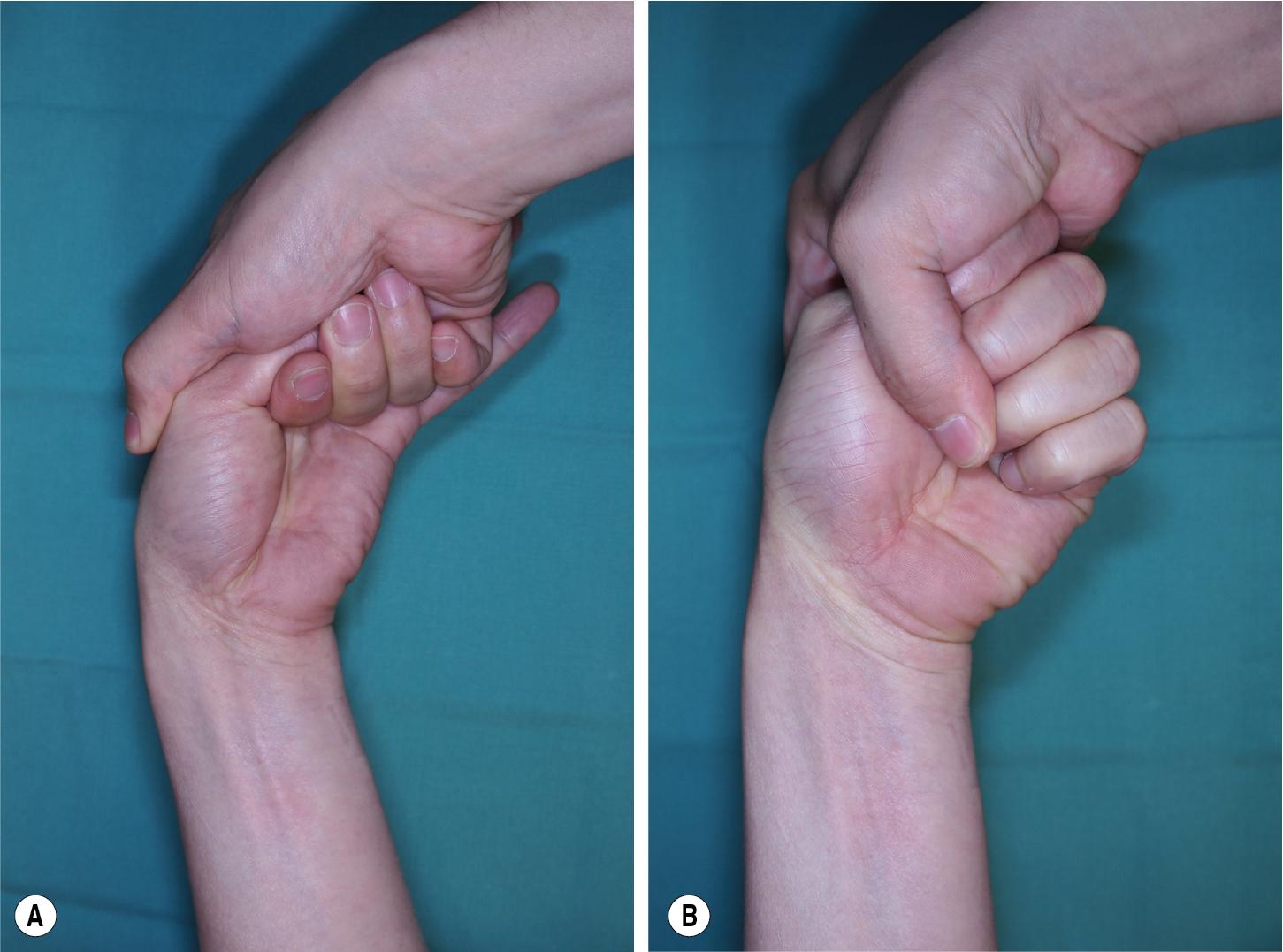Physical Address
304 North Cardinal St.
Dorchester Center, MA 02124
Surgery is indicated for cases that do not respond to conservative therapy.
Conservative therapy includes one to two steroid injections (usually performed with or without ultrasound guidance), nonsteroidal anti-inflammatory medications, splinting, and avoiding activities that cause symptoms. If it is suspected that a separate subsheath or septum is present for the extensor pollicis brevis (EPB) tendon (see the EPB entrapment test later in this chapter), surgical management is also recommended.
The patient classically has pain over the first dorsal extensor compartment at the level of the radial styloid, often with associated soft tissue swelling. More proximal forearm swelling, pain, and crepitus may indicate intersection syndrome.
The Eickhoff test (commonly and erroneously termed the Finkelstein test ) is used to confirm de Quervain tenosynovitis. The patient grasps their thumb inside a closed fist while the examiner ulnarly deviates the hand ( Fig. 84.1 ). Pain over the radial styloid with this motion indicates a positive test.

The true Finkelstein test, which may also help diagnose de Quervain disease, requires the examiner to pull the thumb quickly in a distal and ulnar direction. Pain suggests irritation of the first dorsal compartment tendon sheath.
The EPB entrapment test consists of two parts: (1) The examiner resists thumb metacarpophalangeal (MCP) joint extension, and (2) the examiner resists thumb palmar abduction. If the pain produced by (1) is greater than (2), then the test is positive ( Fig. 84.2A–B ). A positive EPB entrapment test is more commonly seen in patients with a separate EPB compartment.

Radiographs may be taken to exclude bony etiologies (arthritis of the thumb, carpometacarpal joint, or scaphotrapezial-trapezoid joints; scaphoid fracture; or arthrosis of the radiocarpal or intercarpal joints).
Become a Clinical Tree membership for Full access and enjoy Unlimited articles
If you are a member. Log in here